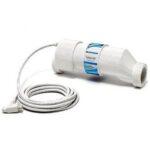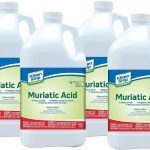
How to Identify and Resolve Pool pH and Alkalinity Problems
Maintaining a balanced water chemistry in your swimming pool is crucial for ensuring a safe and pleasant swimming environment. Two key elements to monitor and regulate are pH and alkalinity levels. In this article, we will discuss common pH and alkalinity problems, their impact on your pool, and how to resolve them effectively.
Understanding pH and Alkalinity in Pools
- pH: The pH level of your pool water measures the acidity or alkalinity on a scale from 0 to 14, with 7 being neutral. Ideally, pool water should have a pH level between 7.2 and 7.6. This range provides optimal chlorine effectiveness and prevents discomfort for swimmers.
- Alkalinity: Total alkalinity refers to the water’s ability to buffer or neutralize acids, helping to stabilize pH levels. A proper alkalinity range for swimming pools is typically between 80 and 120 ppm (parts per million).
Common Pool pH and Alkalinity Problems
- Low pH (Acidic Water): Low pH levels indicate acidic water, which can cause eye and skin irritation for swimmers, corrode metal components in the pool, and damage pool surfaces.
- High pH (Alkaline Water): High pH levels result in alkaline water, reducing the effectiveness of chlorine, leading to cloudy water, scaling on pool surfaces, and clogged filters.
- Low Alkalinity: Low alkalinity causes pH levels to fluctuate rapidly, resulting in unbalanced water chemistry and the potential for the issues associated with low and high pH levels.
- High Alkalinity: High alkalinity leads to a reduced ability to adjust pH levels, causing poor chlorine effectiveness, cloudy water, and scaling on pool surfaces.
How to Resolve pH and Alkalinity Problems
- Adjusting Low pH: To raise the pH level in your pool, use a pH increaser or soda ash. Follow the manufacturer’s instructions to determine the appropriate amount needed based on your pool’s volume. Add the product to the pool water and retest the pH level after a few hours.
- Adjusting High pH: To lower the pH level in your pool, use a pH decreaser, such as muriatic acid or sodium bisulfate. Follow the manufacturer’s guidelines to determine the correct dosage, then add the chemical to the pool water. Retest the pH level after a few hours to ensure it is within the desired range.
- Adjusting Low Alkalinity: To increase the alkalinity level, use an alkalinity increaser, like sodium bicarbonate. Calculate the required amount based on your pool’s volume and the manufacturer’s instructions. Add the product to the pool and wait for a few hours before retesting the alkalinity level.
- Adjusting High Alkalinity: To lower the alkalinity level, use muriatic acid or sodium bisulfate. Add the appropriate amount, as per the manufacturer’s recommendations, to your pool water. Allow the water to circulate for a few hours and then retest the alkalinity level.
Conclusion
Monitoring and maintaining proper pH and alkalinity levels in your swimming pool is crucial for a safe and enjoyable swimming experience. By regularly testing your pool water and addressing any imbalances promptly, you can prevent common problems and protect your pool equipment and surfaces. Remember to follow the manufacturer’s guidelines for all pool chemicals and consult a pool professional if you need assistance in identifying and resolving pH and alkalinity issues.




